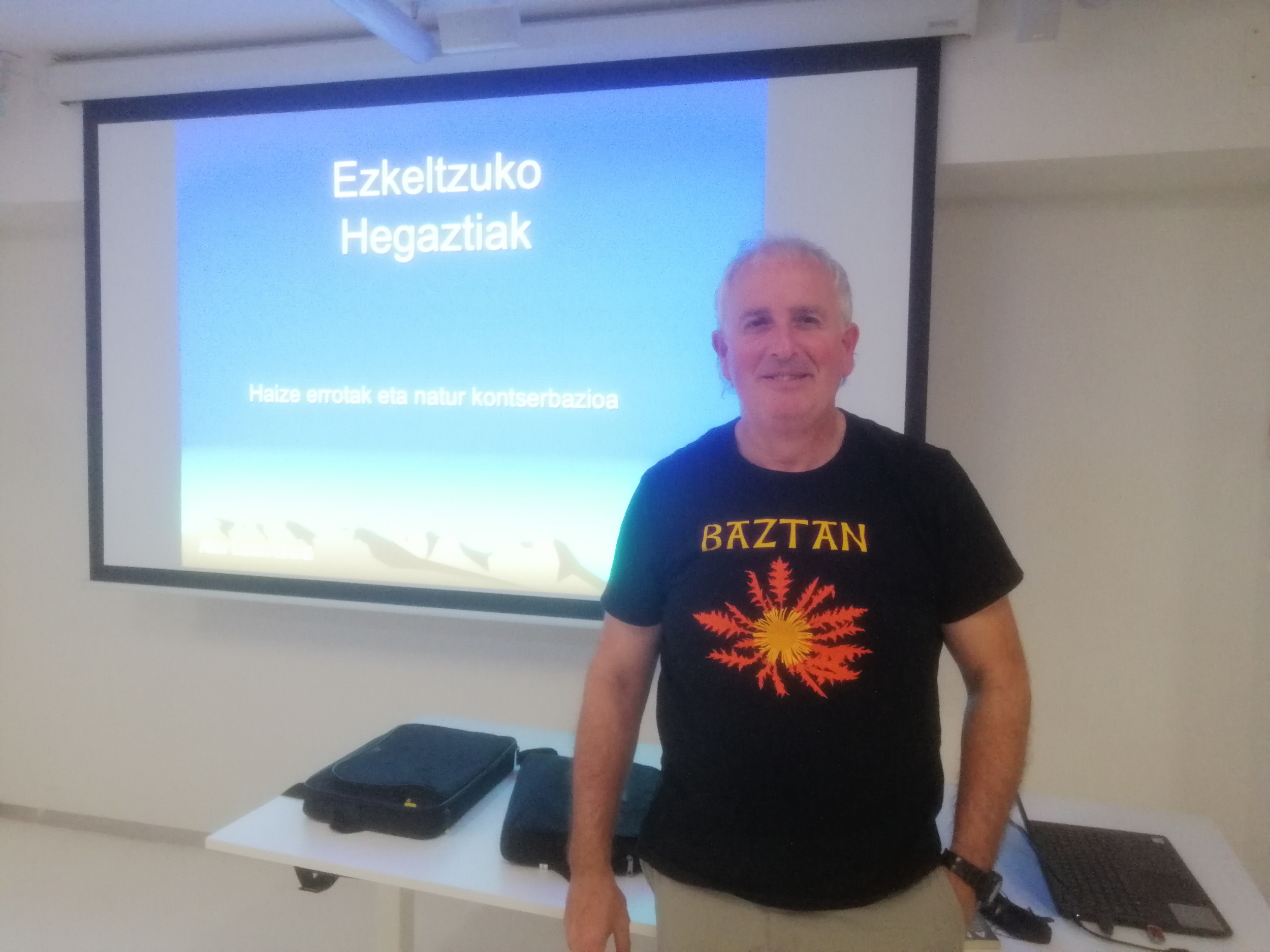
- Wind power plant projects have made people interested in living things in the mountains. As an example, the Andatza-Ezkeltzu Bizirik group offered a conference in early May in Zizurkil, hosted by Aitor Leizak. Leiza is a member of Itsas Enara. From a young age, the birds were fond and the young man was surprised to see the works of a local photographer: “All these birds that appear in the documentaries are here?” he asked, and he began to learn more about birds using books. “We cannot love what we do not know,” he reminds us.

What do wind mills affect birds?
It's no coincidence that there are many hunters here: The Basque Country is at the strategic point between Africa and North Europe, where the most important migratory flow takes place. Millions of birds pass over Euskal Herria every year, and in the case of threatened birds it is very important to see through it. For example, in the area of England the red milano is almost to disappear, and if they do not pass through the Basque Country they will not arrive there.
Migratory birds travel from Europe to Africa to spend the winter: there are birds passing Africa to Madagascar in winter and in summer they will nest to the Arctic. There are two strong migratory flows, one marine and the other terrestrial. And they have a natural barrier. Pyrenees. The Pyrenees have their natural footsteps, through which many birds also pass, but if the weather conditions are adverse they move to Catalonia or to Euskal Herria. Therefore, in Euskal Herria there is a kind of funnel, where the birds that come from the sea and those that come from land meet. So they have to go through Euskal Herria, yes or yes, and they can go anywhere. Migration occurs mainly at night and at night there are no windmills... We always remember birds, but in addition to birds there are also migratory bats and they have a similar problem to birds.
Migrants live in our mountains in three ways: they come to spend the winter from the North to our shores and some go down to Africa, but some specimens are here passing the winter. Other birds live there all year round, and others come for breeding from Africa.
On the other hand, there are predators. Their nests can be located in valleys, 200 meters or a kilometer below the top, but feeding areas are the peaks: they feed on rats, mice, snakes. In wind power plant projects, great importance is attached to the observation of the breeding of an animal. But especially in predators, their way of feeding is to fly over the fields and precisely in those places where windmills feed. Therefore, feeding place is often more important than nesting place. Predators often don't collide with the first windmill, but because of the turbulent winds that produce the arms of the windmill, they collide with the next windmill.
Which birds and plants that live in Ezkeltzu pay attention to? Why?
Predatory discards are the most affected. Among the predators is the red milano, in which nesting has begun and that is new, not even the only specimen that did not exist ten years ago.
Think about the situation in which we find the birds: when an animal dies, the farmer is obliged to remove it from the mountain. Why? Naturally, among the birds would come first those of the family of the crows, the mics, the soft parts of the meat. And with the fuss they will bring out, the white smog will come to eat soft parts. Vultures will see this feast of birds and they will come to eat meat between bones. And by the end of the cycle, bone food will be abundant. Instead of pushing all of this, humans go with the truck to pick up the dead animal and at the same time create feeders for the birds to eat.
The bone creek, which eats bones, will soon be in our mountains. Located at the top of the trophic chain, it is the only one that has been developed to bite and eat the bones. In Aralar there is a threesome, in Urbasa another couple... and sometimes you see in other mountains as.Desde the vegetable point of view, we must bear in mind that in
Euskal Herria the real forests are very scarce, as the forest is a very complex system. These complex systems were destroyed a hundred years ago, few hectares remain preserved and unrelated. In addition, the loss of agriculture means the loss of the hedges of meadows, mosaics and margins we have in the mountains (natural fences of shrubland and shrub, green without snapping). These structures will disappear along with the baserritars. In Ezkelzu, for example, the red hawk, birds accompanying them are also in decline.
There are several plants and birds on the list of threatened species in the Basque Country. In the case of these threatened species, the law requires a study to determine what to do not get lost and how to manage this environment. Perhaps in order to be able to carry out these projects the management plans for each of these species have not been intentionally drawn up, since if management plans were made, some of these actions might not be carried out. It is for the Basque Government to designate the endangered species, but it is for the Members to draw up the management plan for each of them. And among the animals and plants threatened on the government list, very few have drafted the management plan. Furthermore, it is not just a question of drafting the plan, but of reviewing it in several years and not being done.
Two related contents:
Wind power plants kill over 8,900 birds in Navarra
What does it matter to me if that bug disappears in our mountain?